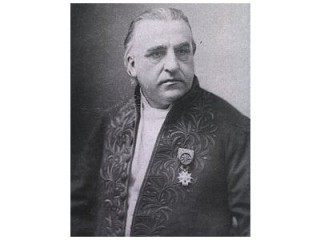
Jean-Martin Charcot biography
Date of birth : 1825-11-29
Date of death : 1893-08-16
Birthplace : Paris, France
Nationality : French
Category : Science and Technology
Last modified : 2011-07-21
Credited as : Neurologist, professor of anatomical pathology,
Jean-Martin Charcot was born in Paris on Nov. 29, 1825, the son of a carriage maker. He took his medical degree at the University of Paris in 1853 and was appointed professor of pathological anatomy there in 1860. In 1862 he was appointed senior physician at the Salpitrière, a hospital for the treatment of the mentally ill. It became a center for psychiatric training and psychiatric care, for Charcot had a flair for theatrics in addition to his reputation for sound science, and his lectures and demonstrations attracted students from all over Europe.
Charcot's contributions fall largely into three categories. First, he studied the etiology and cure of hysterical disorders (psychoneuroses). These disorders involve what appear to be physiological disturbances such as convulsions, paralyses, blindness, deafness, anesthesias, and amnesias. However, there is no evidence of physiological abnormalities in psychoneuroses since the root of the problem is psychological. In Charcot's time hysteria was thought to be a disorder found only in women (the Greek word hysterameans uterus), but his demonstrations were eventually influential in correcting this idea. Charcot, however, continued to think of hysteria as a female disorder. Freud was later to associate hysterical symptoms with sexual problems.
Charcot's second area of contribution was the correlation of various behavioral symptoms with physiological abnormalities of the nervous system. One of the major problems for early psychiatry was that of determining whether certain behavioral abnormalities had their origins in psychological or in physiological disturbances and, if physiological, where in the central nervous system the abnormality might be located. Charcot became noted for his ability to diagnose and locate the physiological disturbances of nervous system functioning.
Finally, Charcot made popular the use of hypnotism as a part of diagnosis and therapy. Hypnotism, known at the time as "mesmerism" (named for Franz Anton Mesmer), was regarded by the medical profession as charlatanism. Charcot found hypnotism useful in distinguishing true psychoneurotics from fakers and, like Mesmer, found that hysterical symptoms could be relieved through its use. In the hypnotic state the patient falls into an apparent sleep. While in this condition, the patient can sometimes recall events in his life which are not recalled in the waking state, and he is susceptible to the suggestions of the therapist. In 1882 Charcot presented a summary of his findings to the French Academy of Sciences, where they were favorably received. Scientific psychiatry was thus well on its way to being accepted by the medical profession. Charcot died on Aug. 16, 1893.
















